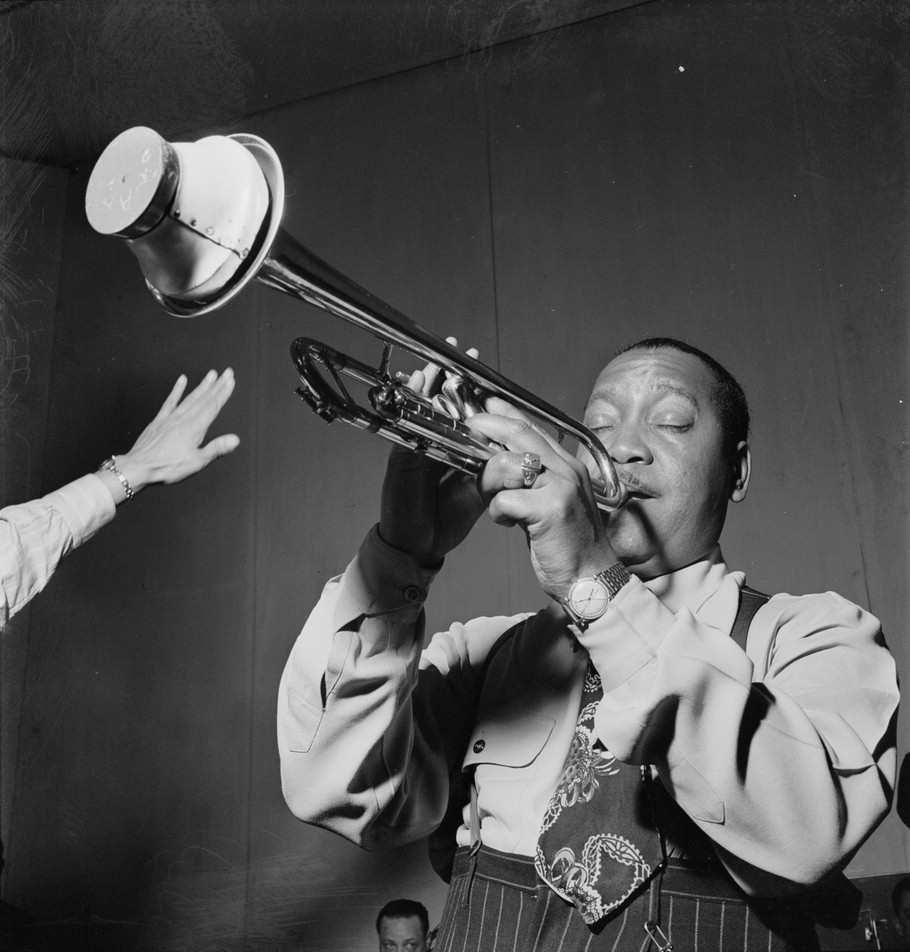Introduction:
Jonah Jones, born Robert Elliott Jones one hundred and fourteen years ago today on December 31, 1909, in Louisville, Kentucky, left an indelible mark on the jazz landscape as a trumpeter, arranger, and bandleader. Known for creating concise yet powerful versions of jazz and swing standards, Jones became a household name, earning acclaim for his versatile style that appealed to a broad audience. This article explores the life, career, and enduring legacy of the man sometimes referred to as “King Louis II.”
Early Life and Musical Genesis:
Growing up in a musically inclined family, Jones’ journey into music began at the age of 12 when he picked up the alto saxophone. However, fate intervened, and a stuttering music instructor led to him being known as ‘Jonah.’ Quickly transitioning to the trumpet, he demonstrated exceptional proficiency, laying the foundation for a career that would span nearly eight decades.
Help yourself to some live jazz, and help the artists and clubs fulfill their dreams. Sign up to Oh! Jazz to watch live and on-demand performances. 25% of your subscription goes back to the artists and 10% to the clubs.
Learn more about Oh! Jazz here.
Navigating the River of Jazz:
Jones embarked on his musical journey in the 1920s, playing on Mississippi riverboats. By 1928, he joined forces with Horace Henderson, marking the beginning of a career dotted with collaborations with jazz luminaries such as Jimmie Lunceford and Stuff Smith. His association with Smith, lasting from 1932 to 1936, showcased his prowess in the jazz community.
In the 1940s, Jones’ musical odyssey continued as he contributed to big bands led by Benny Carter and Fletcher Henderson. Notably, he spent a significant part of a decade with Cab Calloway’s band, which later transformed into a combo.
The Pinnacle of the ’50s: A Quartet and Chart-Topping Success
The 1950s ushered in a new chapter for Jones as he formed his quartet, comprising George “River Rider” Rhodes on piano, John “Broken Down” Browne on bass, and Harold “Hard Nuts” Austin on drums. Embracing a formula that combined swing, boogie-woogie, and jump blues, Jones gained widespread appeal. His quartet’s rendition of “On The Street Where You Live” became iconic, showcasing his ability to infuse Broadway tunes with a swinging, boogie-woogie flair.
This period of innovation and success led to Jones’ quartet featuring on “An Evening With Fred Astaire” in 1958, a testament to his growing recognition. In 1960, Jones clinched the Grammy Award for Best Jazz Instrumental Album, solidifying his status as a jazz virtuoso with mass appeal.
A Return to Jazz Roots:
In 1972, Jones made a poignant return to his jazz roots, collaborating with Earl Hines on the Chiaroscuro album “Back On The Street.” Despite his foray into popular music, Jones maintained his connection with the core of jazz, showcasing his versatility and commitment to the art form.
Legacy and Recognition:
Jones’ popularity extended beyond American shores, finding a special place in the hearts of jazz enthusiasts in France. In 1999, his contributions to jazz were honored as he was inducted into the Big Band and Jazz Hall of Fame. He left an indomitable legacy that continues to influence jazz musicians, and a videotaped interview conducted by Dan Del Fiorentino in 1996, donated to the NAMM Oral History Program Collection, serves as a testament to his enduring impact.
Personal Life and Later Years:
Beyond the stage, Jones led a fulfilling personal life. He married Elizabeth Bowles, a fellow trumpeter, clarinetist, and hornist. They had four children, creating a musical legacy that extended through generations. Jones’ final notes were played in New York City, where he passed away on April 30, 2000, at the age of 90.
Discography: A Symphony of Achievements
Jones’ discography reads like a symphony of achievements, reflecting his commitment to musical exploration. From “Jonah Jones at the Embers” to “Back On The Street,” each album stands as a testament to his artistry and ability to evolve with the ever-changing currents of music.
Jonah Jones, with his trumpet as a compass, navigated the ever-changing currents of jazz, leaving an indelible imprint on its history. From the riverboats of the Mississippi to the grand stages of the Grammy Awards, his journey mirrored the evolution of jazz itself. As the trumpet’s last echo lingered, Jones’ legacy reverberated through the ages, reminding us that, in the world of jazz, some voices are immortal.
References:
- Larkin, C. & Crowther, B. (1992). The Guinness Who’s Who of Jazz. Guinness World Records Ltd.
- Jonah Jones picture. Retrieved from https://en.wikipedia.org/wiki/File:Jonah_Jones,_Columbia_Studio,_NYC,_march_1947_(Gottlieb_04681).jpg

Leave a Reply